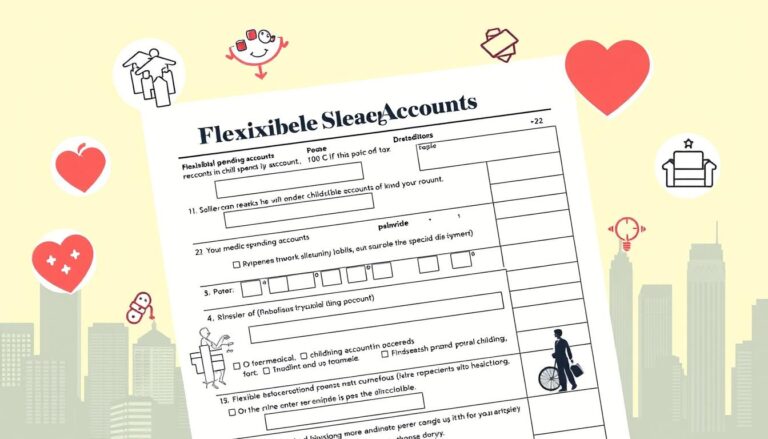Are you squinting at your tax forms? You’re not alone. If you’ve bought new glasses, you might wonder if you can deduct them. Let’s make things clear about deducting vision care costs and tax write-offs for vision expenses.
Glasses can be expensive, costing from $100 to over $400 without insurance. But, there’s good news: you might be able to deduct these costs if you meet certain rules. It’s like finding money in your coat, but with more paperwork!
To get these deductions, you need to itemize on Schedule A of your tax return. Only costs over 7.5% of your adjusted gross income (AGI) can be deducted. This includes costs for diagnosis, treatment, and prevention of diseases – yes, your eyes are included!
So, what can you deduct for your vision? Prescription glasses, contact lenses, eye exams, and even vision correction surgery might be deductible. It’s like a buffet for your eyes, but you get tax savings instead!
Key Takeaways
- Prescription eyeglasses can be tax-deductible if requirements are met
- Deductions are claimed by itemizing on Schedule A of your tax return
- Only medical costs exceeding 7.5% of AGI are deductible
- Qualified expenses include glasses, contacts, eye exams, and vision surgery
- Keep all receipts and documentation for at least 3 years
Understanding Medical Expense Deductions
Tax season is here, and knowing what you can deduct is key. Medical expense deductions can help lower your taxes. Let’s explore how itemized medical expenses can help you.
Qualified Medical Expenses Explained
Qualified medical expenses include many health costs. This means payments to doctors and other medical professionals. You can also deduct costs for eye care, glasses, and contact lenses. Even getting to your doctor’s office can be deductible.
The 7.5% AGI Threshold
But there’s a rule: you can only deduct expenses over 7.5% of your adjusted gross income (AGI). For instance, if your AGI is $50,000, deduct only what’s over $3,750. This rule is for everyone, no matter who you file with.
Itemizing vs. Standard Deduction
To deduct medical expenses, you must itemize. This means you can’t take the standard deduction. For 2023, the standard deduction is $13,850 for singles and $27,700 for married couples filing together. Itemize if your deductions, including medical costs and health insurance, are more than these amounts.
Remember, deducting medical expenses can save you money. But, it’s important to keep good records and talk to a tax expert to get the most out of it.
Are Prescription Glasses Tax Deductible?
Yes, you can deduct the cost of your prescription glasses on your taxes. The IRS says they are a medical expense. This can help you save money while you see better.
You can also deduct other vision costs. This includes contact lenses, eye surgery, and prescription sunglasses. But, only items you need because of a doctor’s order count.
How much you pay for glasses can vary a lot. Without insurance, you might pay between $100 to $400. Online stores can be cheaper, with prices averaging $91 compared to $234 in stores.
To get these deductions, you need to list your expenses. Keep all your receipts and bills safe for three years. The IRS might ask to see them.
- Eligible expenses: Prescription glasses, contact lenses, eye exams, vision correction surgery
- Not eligible: Non-prescription eyewear, cosmetic procedures
- Required documents: Receipts, bills, prescriptions
Tip: If you have a Health Savings Account (HSA) or Flexible Spending Account (FSA), use those funds for your glasses. But, you can’t claim the same expense twice.
Conclusion: Maximizing Your Vision-Related Tax Benefits
You now know about tax write-off vision expenses. Let’s summarize how to get the most out of your deductible vision care costs. Remember, the IRS says prescription glasses are a qualified medical expense. But, you must have more than 7.5% of your income in medical expenses to claim these deductions.
Keep your receipts safe! It’s important to track all your vision costs, like eye exams and contact lenses. Don’t forget about Health Savings Accounts (HSAs) or Flexible Spending Accounts (FSAs). These tools let you pay for eyewear with pre-tax dollars, helping your wallet.
Still confused about itemized medical expenses? No worries! Talk to a tax pro to make sure you’re getting all the deductions you can. By being smart with your vision care and taxes, you’ll see big savings. That’s a clear view for sure!








